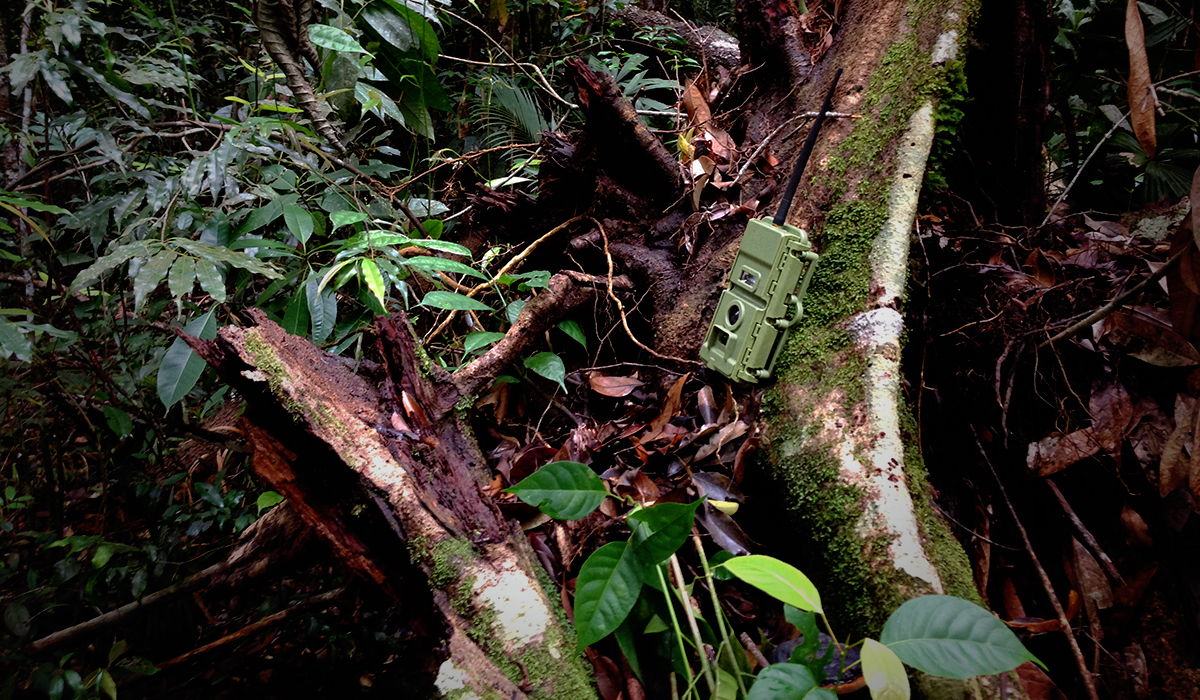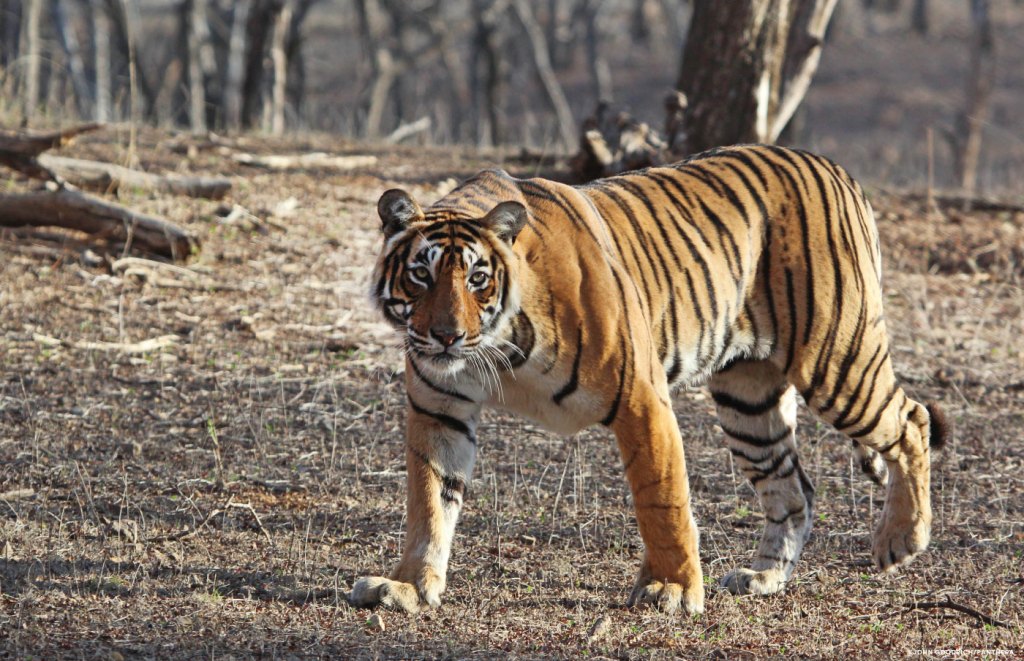Deep in the jungles of Asia, a predator stalks. It’s deadly, ruthless, and tactical. And camera traps, long used to capture images of wildlife in the forest, are now being trained on this target: tiger poachers.
Panthera, a global wild cat conservation organization, had the cameras custom built from scratch and have started rolling out networks of the poacher-spotting technology. Fewer than 4,000 tigers are left in the wild, occupying only 4 percent of their historic range, according to Panthera. Tiger meat, bones, and skin fetch high prices on the black market, making poaching one of the biggest threats to these endangered cats.
Videos by VICE
The new software used in the cameras is designed to aid anti-poaching efforts on the ground by distinguishing between humans and animals in an image. When the camera spies a human using a motion sensor, it snaps a photo and instantly transmits the image via email to a network of people, including to local forest rangers, who can use it to intercept or disrupt poaching expeditions.

“My view is any real-time information is going to improve the ability of front-line personnel to address these issues,” said Luke Hunter, the president and chief conservation officer at Panthera. “In the long term, good protection of these areas ultimately relies on being able to have people where we need them. The poacher cam helps strategically deploy them.”
Camera traps have been used in conservation for decades. Traditionally, this tool is used to capture images of wildlife, to help study population numbers, behavior, and health of the animals.
In 2013, after having a custom, affordable, and lightweight camera trap built, Panthera’s top brass starting mulling over the idea of turning those cameras on the humans who stalk through the jungle, instead of the animals they hunt. With the help of IBM engineers, they started to create software that would distinguish a human from a tiger or elephant.
The cameras are equipped with a motion sensor and a long-lasting battery, explained Chris Cline, Panthera’s chief technologist who helped design the cameras. When it captures an image, the camera scans them to determine if there’s a human in the frame.
“It’s just, in the most basic way, trying to figure out if the subject is more upright or more four-legged—so is it more horizontal or more vertical?” Cline told me. “If it thinks it’s a person, then it powers up the cell phone module and sends that image across to the server, which sends an alert out to specific people.”
Despite Cline’s claims that the technology was “simple,” the software used to analyze the photos was built from scratch. The hardware, which needed to be affordable enough to produce hundreds of cameras to weave throughout a forest and be replaceable if poachers find and destroy them, was also built from the bottom up. The cameras cost about $250 each and are designed to be covert and easily moved. Panthera isn’t the first conservation group to build a poacher-specific camera trap, but theirs is more portable and cheaper than versions made by groups like World Wildlife Fund, which cost $7,000 a pop.
Panthera has recently deployed these poacher cameras in tiger and lion conservation ranges in India, Nepal, Malaysia, Benin, and Thailand. But it hasn’t been a seamless rollout—and they’ve yet to have a successful case of a thwarted poacher (though Panthera clarified this is only a field test, and the cameras haven’t been fully rolled out yet). One limitation is the availability of cell phone networks, which are needed to transmit the images to park rangers in real time.
“Typically the range is leased or sold to big telecom companies, which means you can’t use those frequencies without permission,” Cline said. “You have to go to the right government authorities and negotiate, if possible, the use of at least one channel in that frequency range.”
Even once they clear that regulatory hurdle, there are physical obstacles to rolling out the network. If there aren’t existing cell phone towers close to the area, the radio signal can quickly get attenuated in the dense forest where tigers roam. But Hunter told me they’re planning to be strategic, placing the camera traps near entrance points that poachers frequent on the edge of the forest, where it’s easier to get a signal.
Still, not all conservationists are convinced the technology is the most practical tool. Lieutenant Colonel Faye Cuevas leads the anti-poaching programs in Kenya and India for the International Fund for Animal Welfare. She told me these cameras can have a role, but there’s no panacea when it comes to poaching.
“Here in Kerala, the forest is so dense that if an image of a poacher is transmitted (even in real-time) to the Forestry Service or other group, by the time you figure in reaction time for a Forestry Officer to get to the location, it’s too late,” Cuevas wrote in an email. “We also have to consider impacts on the ecosystem…What is the impact to those radio wave networks and signals created from them on bees, insects, birds, and bats in the ecosystem—nobody (to my knowledge) has studied that.”
Hunter agreed that there is no single cure for poaching, but he said even if an image doesn’t mean a poacher is caught in the act, the information will help the overall understanding of who these poachers are and how they work, before they wipe out the last of the world’s tigers.
Clarification: An earlier version of this story noted that no poachers have been caught yet, but did not clarify that this program is only in the field trial stage.




